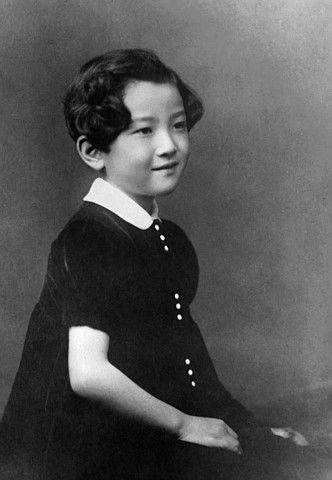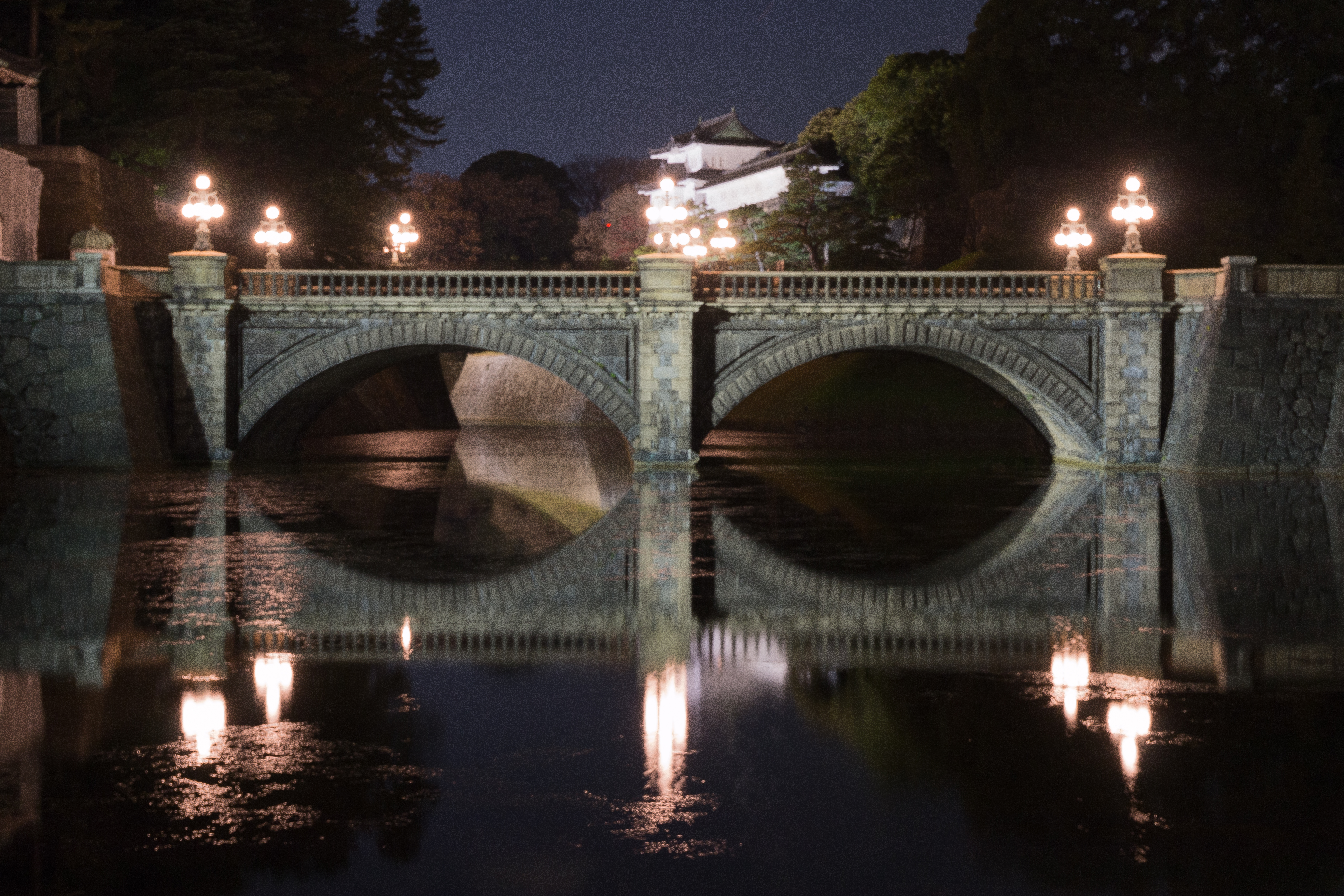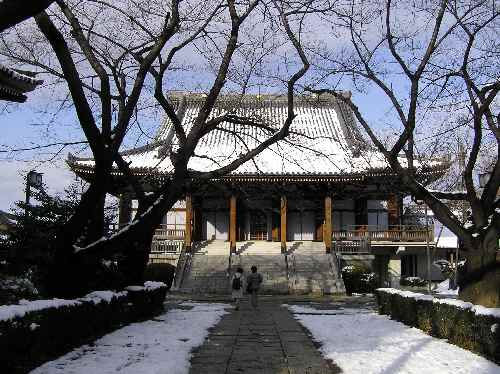|
Empress Michiko
is a member of the Imperial House of Japan who served as the Empress consort of Japan as the wife of Akihito, the 125th Emperor of Japan reigning from 7 January 1989 to 30 April 2019. Michiko married Crown Prince Akihito and became the Crown Princess of Japan in 1959. She was the first commoner to marry into the Japanese Imperial Family. She has three children with her husband. Her elder son, Naruhito, is the current emperor to the Chrysanthemum Throne. As crown princess and later as empress consort, she has become the most visible and widely travelled imperial consort in Japanese history. Upon Emperor Akihito's abdication, Michiko received the new title of , or Empress Emerita. Early life and education Michiko Shōda was born on 20 October 1934 at the University of Tokyo Hospital in Bunkyō, Tokyo, the second of four children born to Hidesaburō Shōda ( 正田英三郎 ''Shōda Hidesaburō''; 1903–1999), president and later honorary chairman of Nisshin Flour Milling Co ... [...More Info...] [...Related Items...] OR: [Wikipedia] [Google] [Baidu] |
Order Of The Precious Crown
The is a Japanese order, established on January 4, 1888 by Emperor Meiji of Japan. Since the Order of the Rising Sun at that time was an Order for men, it was established as an Order for women. Originally the order had five classes, but on April 13, 1896 the sixth, seventh and eighth classes were added. Until 2003, the Order of the Precious Crown, which had eight ranks, was equivalent to the Order of the Rising Sun and was awarded as a women-only version of the Order of the Rising Sun.栄典制度の概要. p.6 In 2003 the Order of the Rising Sun, previously reserved for males, was made available to ... [...More Info...] [...Related Items...] OR: [Wikipedia] [Google] [Baidu] |
2019 Japanese Imperial Transition
The 2019 Japanese imperial transition occurred on 30 April 2019 when the then 85-year-old Emperor Akihito of Japan abdicated from the Chrysanthemum Throne after reigning for 30 years, becoming the first Emperor of Japan to do so since 1817. This marked the end of the Heisei era and the inception of the Reiwa era, and saw numerous festivities leading up to the accession of his son and successor, Emperor Naruhito. The Enthronement Ceremony took place on 22 October 2019. Akihito's younger son, Prince Akishino, is his brother's heir presumptive. Emperor and Constitution Background In 2010, Emperor Akihito informed his advisory council that he would eventually like to retire from his position. However, no action was taken by senior members of the Imperial Household Agency. On 13 July 2016, national broadcaster NHK reported that the Emperor wished to abdicate in favour of his elder son Crown Prince Naruhito within a few years. Senior officials within the Imperial Househo ... [...More Info...] [...Related Items...] OR: [Wikipedia] [Google] [Baidu] |
Chiyoda, Tokyo
is a Special wards of Tokyo, special ward located in central Tokyo, Japan. It is known as Chiyoda City in English language, English.Profile ." ''City of Chiyoda''. Retrieved on December 28, 2008. It was formed in 1947 as a merger of Kanda, Tokyo, Kanda and Kōjimachi wards following Tokyo City's Local Autonomy Act, transformation into Tokyo Metropolis. The modern Chiyoda ward exhibits contrasting Shitamachi and Yamanote geographical and cultural divisions. The Kanda area is in the core of Shitamachi, the original commercial center of Edo-Tokyo. On the other hand, the western part of the Kōjimachi area typically represents a Yamanote district. Chiyoda consists of the Tokyo Imperial Palace, Imperial Palace and a surrounding radius of about a kilometer. As of October 2020, the ward has a p ... [...More Info...] [...Related Items...] OR: [Wikipedia] [Google] [Baidu] |
Kōjimachi
is a district in Chiyoda, Tokyo. History Prior to the arrival of Tokugawa Ieyasu, the area was known as . The area developed as townspeople settled along the Kōshū Kaidō. In 1878, the Kōjimachi area became , a ward of the city of Tokyo. In 1934 and 1938, the addressing system along the Koshu-Kaido was reorganized, creating the 6 chomes subdivision for Kōjimachi that are still used. In 1947, the Kōjimachi ward was merged with the Kanda ward to form the modern special ward Chiyoda, and the 6 chomes became the Kōjimachi district. The area centered upon Kōjimachi including the districts of the Banchō area, Kioichō, Hirakawachō and Hayabusachō is sometimes referred as the Kōjimachi area (麹町地区), not to be mistaken with Kōjimachi ward (麹町区). This place is also known for Hideki Tojo's birthplace, general of the Imperial Japanese Army. Landmarks and headquarters *Embassy of Portugal *Embassy of Ireland *Embassy of Belgium *Japan Sun Oil Company, ... [...More Info...] [...Related Items...] OR: [Wikipedia] [Google] [Baidu] |
Osaka University
, abbreviated as , is a public research university located in Osaka Prefecture, Japan. It is one of Japan's former Imperial Universities and a Designated National University listed as a "Top Type" university in the Top Global University Project. The university is often ranked among the top three public universities in Japan, along with the University of Tokyo and Kyoto University. It is ranked third overall among Japanese universities and 75th worldwide in the 2022 QS World University Rankings. Osaka University was one of the earliest modern universities in Japan at its founding in 1931. The history of the institution includes much older predecessors in Osaka such as the Kaitokudō founded in 1724 and the Tekijuku founded in 1838. In 2007, it merged with Osaka University of Foreign Studies and became the largest national university in Japan. Osaka University is one of the most productive research institutions in Japan. Numerous prominent scholars and scientists have attend ... [...More Info...] [...Related Items...] OR: [Wikipedia] [Google] [Baidu] |
Kenjiro Shoda
Kenjiro Shoda ( Japanese: 正田 建次郎 ''Shōda Kenjirō''; February 25, 1902 – March 20, 1977) was a Japanese mathematician. Early life and career Kenjiro Shoda was born on February 25, 1902 in Tatebayashi, Gunma to a wealthy family. He was the second son of , who was the founder of Nisshin Flour ( Nisshin Seifun Group), one of the biggest companies in Japan, a member of the House of Peers, and a great-grandfather of the Emperor. He was educated in Tokyo until he finished junior high school. He went to the National Eighth High School in Nagoya, today succeeded to Faculty of Liberal Arts of Nagoya University. After Shoda finished the Eighth High School, he returned to Tokyo and studied mathematics at Imperial University of Tokyo. Shoda was supervised by Teiji Takagi, one of the best mathematicians in Japan at that time, and Takagi inspired Shoda to study algebra. Shoda graduated at Department of Mathematics, Faculty of Science at Tokyo University in 1925 an ... [...More Info...] [...Related Items...] OR: [Wikipedia] [Google] [Baidu] |
Kōdō
is the art of appreciating Japanese incense, and involves using incense within a structure of codified conduct. ''Kōdō'' includes all aspects of the incense process, from the , to activities such as the incense-comparing games ''kumikō'' () and ''genjikō'' (). ''Kōdō'' is counted as one of the three classical Japanese arts of refinement, along with ''kadō'' for flower arrangement, and ''chadō'' for tea and the tea ceremony. Etymology The word 香 ''kō'' is written with the Chinese Kangxi radical 186, which is composed of nine strokes (although it can be expanded up to 18 strokes 馫). Translated, it means "fragrance"; however, in this context, it may also be translated as "incense". The word 道 ''dō'' (written with the same character as Chinese ''tao''/''dao'') means "way", both literally (street) and metaphorically (a stream of life experience). The suffix -道 generally denotes, in the broadest sense, the totality of a movement as endeavor, tradition, practice ... [...More Info...] [...Related Items...] OR: [Wikipedia] [Google] [Baidu] |
Piano
The piano is a stringed keyboard instrument in which the strings are struck by wooden hammers that are coated with a softer material (modern hammers are covered with dense wool felt; some early pianos used leather). It is played using a musical keyboard, keyboard, which is a row of keys (small levers) that the performer presses down or strikes with the fingers and thumbs of both hands to cause the hammers to strike the strings. It was invented in Italy by Bartolomeo Cristofori around the year 1700. Description The word "piano" is a shortened form of ''pianoforte'', the Italian term for the early 1700s versions of the instrument, which in turn derives from ''clavicembalo col piano e forte'' (key cimbalom with quiet and loud)Pollens (1995, 238) and ''fortepiano''. The Italian musical terms ''piano'' and ''forte'' indicate "soft" and "loud" respectively, in this context referring to the variations in volume (i.e., loudness) produced in response to a pianist's touch or pressure on ... [...More Info...] [...Related Items...] OR: [Wikipedia] [Google] [Baidu] |
Nisshin Seifun Group
is a Japanese company based in Tokyo (25, Kanda-Nishiki-cho 1-chome, Chiyoda-ku) with overseas operations. Nisshin Seifun is listed on the Nikkei 225. Founded in 1900, the company is headed by chairman Osamu Shoda (younger brother of the Empress Michiko) and president Hiroshi Oeda. Subsidiaries Subsidiary of Nisshin Seifun Group include: * Nisshin Flour Milling Company * Nisshin Foods Inc * Nisshin Pharma Inc * Nisshin Petfoods Inc * Nisshin Engineering Inc * Oriental Yeast Company Limited * NBC Meshtec Inc — screen-printing materials, mesh products * Initio Food Inc — ready to eat foods * Rogers Foods Ltd. — milled products; plants in Armstrong and Chilliwack Chilliwack ( )( hur, Ts'elxwéyeqw) is a city in the province of British Columbia, Canada. Chilliwack is surrounded by mountains and home to recreational areas such as Cultus Lake and Chilliwack Lake Provincial Parks. There are numerous outdoor ..., Canada Operations Nisshin Seifun has operations outside Ja ... [...More Info...] [...Related Items...] OR: [Wikipedia] [Google] [Baidu] |
Tokyo
Tokyo (; ja, 東京, , ), officially the Tokyo Metropolis ( ja, 東京都, label=none, ), is the capital and List of cities in Japan, largest city of Japan. Formerly known as Edo, its metropolitan area () is the most populous in the world, with an estimated 37.468 million residents ; the city proper has a population of 13.99 million people. Located at the head of Tokyo Bay, the prefecture forms part of the Kantō region on the central coast of Honshu, Japan's largest island. Tokyo serves as Economy of Japan, Japan's economic center and is the seat of both the Government of Japan, Japanese government and the Emperor of Japan. Originally a fishing village named Edo, the city became politically prominent in 1603, when it became the seat of the Tokugawa shogunate. By the mid-18th century, Edo was one of the most populous cities in the world with a population of over one million people. Following the Meiji Restoration of 1868, the imperial capital in Kyoto was mov ... [...More Info...] [...Related Items...] OR: [Wikipedia] [Google] [Baidu] |
Bunkyō
is a special ward located in Tokyo, Japan. Situated in the middle of the ward area, Bunkyō is a residential and educational center. Beginning in the Meiji period, literati like Natsume Sōseki, as well as scholars and politicians have lived there. Bunkyō is home to the Tokyo Dome, Judo's Kōdōkan, and the University of Tokyo's Hongo Campus. Bunkyō has a sister-city relationship with Kaiserslautern in the Rhineland-Palatinate of Germany. It was formed in 1947 as a merger of Hongo and Koishikawa wards following Tokyo City's transformation into Tokyo Metropolis. The modern Bunkyo ward exhibits contrasting Shitamachi and Yamanote geographical and cultural division. The Nezu and Sendagi neighborhoods in the ward's eastern corner is attached to the Shitamachi area in Ueno with more traditional Japanese atmosphere. On the other hand, the remaining areas of the ward typically represent Yamanote districts. As of May 1, 2015, the ward has a population of 217,743 (includin ... [...More Info...] [...Related Items...] OR: [Wikipedia] [Google] [Baidu] |


.jpg)



